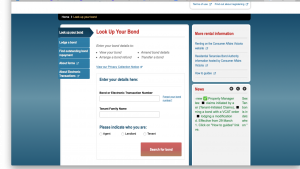Relocating employees is an integral part of any business’s international expansion strategy. But it can be daunting for both the employee and the human resource manager, especially if you don’t have a framework and strategic objections laid out. In this article, I share some insights and checklists on where to start with planning your framework and then building your Relocation stratergy.
On page 201 of my book, I discuss the Social Readjustment Rating Scale (SRRS), developed by psychiatrists Thomas Holmes and Richard Rahe. It measures the “Impact of life events”. Immigration is actually not listed in their 43 events, but if you take related events, you will end up with a score that equates to over 300. This means the immigrant is at risk of mental health illness due to the stress. Relocating is a life event, it is imperative it is managed well.
Having a proper relocation strategy in place makes sense. It provides clarity, checkpoints and clear intentions for everyone concerned, reducing stress immensely.
What are the positive impacts of relocating employees?
Relocating employees across the globe to Australia can be a cost-effective way for businesses to access intel from other regions. This is particularly valuable for companies who are looking to expand into new geographic markets or who are looking to serve a more diverse marketplace.
At Personnel Relocations, as an example, we relocate many fashion designers who bring their global ideas and trends to our doorstep. These individuals grow the Australian market and share cultural and business acumen with local employees.
Companies can diversify their talent pool, and there are huge benefits from the unique skills, perspectives and experiences foreigners bring. There is no doubt that companies can stay competitive, enabling them to tap into a wider market.
Relocating employees outwards from Australia can also help your business
- develop an international presence,
- expand its customer base and
- create larger growth for the business.
Sending skilled workers to an overseas location can help train local employees and improve cultural understanding and communication – three ingredients you need to succeed in any international business arena.
Whenever a company wants to expand globally or reach new markets within Australia, it should start with a Relocation Framework, followed by a more comprehensive Relocation Strategy.
What is Relocation Strategy?
A relocation strategy is a two-fold plan that starts with preparing the business for relocating employees and then moves on to the strategy for the employees.
A business relocation strategy list is a collection of action items and considerations a company may need to consider when planning a relocation. Here are some items that could be included in such a list:
- Assess the reasons for the relocation: Determine why the relocation is necessary and identify the key objectives the company wants to achieve with the move.
- Research the new location: Conduct thorough research on the new location, including factors such as business regulations, taxes, transportation, infrastructure, and access to talent.
- Develop a budget: Develop a budget for the relocation that considers all associated costs, such as moving expenses, employee relocation, lease or purchase of new property, and any legal or administrative fees.
- Create a timeline: Develop a timeline for the relocation that takes into account all necessary steps and allows for contingencies.
- Communicate with stakeholders: Communicate with all relevant stakeholders, such as employees, customers, suppliers, and partners, to keep them informed of the relocation and address any concerns.
- Develop a transition plan: Develop a plan for the transition period, including the logistics of moving equipment, technology, and personnel to the new location.
- Address legal and administrative requirements: Ensure that all legal and administrative requirements are met for the relocation, including obtaining necessary permits and licences.
- Develop a plan for relocating employees, including providing support for their relocation, such as temporary housing and travel expenses.
- Develop a contingency plan: Develop a contingency plan to address any unexpected issues or challenges that may arise during the relocation process.
- Evaluate the success of the relocation: Once the relocation is complete, evaluate the success of the relocation strategy and identify areas for improvement in future relocations.
Once you have identified talent with your organisation that you are interested in relocating, ask yourself, “Are they the right fit?”
Too often, we hire for the expertise, but the candidate does not really fit the culture of the company – even more so can be found when you are hiring from another country’s culture completely. The stakes feel higher, so even more investigation should occur before hiring talent.
Related article: 3 Personality Traits To Look For in International Assignee
What is the difference between a relocation framework and a relocation strategy?
A relocation strategy is a comprehensive plan outlining the actions and considerations necessary for a company to relocate employees successfully.
On the other hand, a relocation framework refers to a more general approach. It may include broad principles or best practices that companies can apply to their unique situation, such as assessing the impact of the relocation on the company’s operations, evaluating the potential risks and benefits of the move, and developing a communication plan to keep stakeholders informed.
In essence, a relocation framework provides a general roadmap or guiding principles for companies to use in developing a relocation strategy, while a relocation strategy is a specific plan of action that takes into account the unique needs and circumstances of the company and its employees.
When building a relocation framework, it cannot always be enough to say, “One size fits all”.
Your framework should offer a range of options that satisfy the needs of the employee as well as meet the demands of the business and its objectives. You could consider different levels of support for each level of existing employees or that of a new employee. Often, in my line of work – people talk and compare their offers and packages, so you need to ensure you have clear parameters in place.
If you need a little bump on creating your relocation strategy and framework, you can start with these questions:
- What are the needs of the business?
- What level of an employee might be eligible, and which framework would support each level of employee?
- How will the strategy be communicated effectively, so everyone has the same expectations? Intranet, book, verbally?
- Is it compliant with both internal and external environments?
Every company wants its employees to enjoy a positive experience during the move, which goes beyond their first few months of arrival. Having a good relocation framework will:
- Improve and clarify communication between all parties
- Help the company achieve both short and long-term goals
- Reduce the risk of non-compliance
- Improve ROI. Employees can capitalise on their skills and experience to add value to the business
Business Relocation Checklist
Here is a brief 10-point checklist on what you should consider for your Employee Relocation strategy. I am sure you will find it helpful, and I hope, if you already have a strategy, you have got everything covered, at least to some degree.
- Determine the reason for the relocation: Understand why the employee is being relocated and what the company aims to achieve with the relocation.
- Develop a relocation policy: Develop a policy that outlines the company’s approach to employee relocation, including what expenses will be covered and what support will be provided to the employee and their family.
- Evaluate the employee’s needs: Understand the needs of the employee and their family, including housing, transportation and schooling, and provide support to address them.
- Provide information about the new location: Provide information about the new location, including the local culture, cost of living, and job market, to help the employee and their family adjust to the new environment.
- Provide support with paperwork and legal requirements: Assist the employee and their family with any necessary paperwork and legal requirements, such as visas, work permits, and tax filings.
- Plan for the logistics of the move: Plan the logistics of the move, including packing, shipping, and storing belongings, and provide support for the employee and their family during the move.
- Provide ongoing support: Provide ongoing support to the employee and their family after the move, including assistance with settling in, language and cultural training, and support for any personal or professional needs.
- Communicate with the employee throughout the process: Maintain open communication throughout the relocation process to keep them informed and address any concerns or questions they may have.
- Develop a contingency plan: Develop a contingency plan to address any unexpected issues or challenges that may arise during the relocation process.
- Evaluate the success of the relocation: Once the relocation is complete, evaluate the success of the employee relocation strategy and identify areas for improvement in future relocations.
Communication is absolutely essential for any relocation. That starts with the corporate and the relocation consultant. I cannot stress how much paperwork is involved with relocation, so keeping communication clear and concise should be a huge part of your strategy.
Having information available to employees that they can access easily when needed is valuable in putting them at ease.
At any time, there could be as many as five different people involved in a relocation:
- HR
- Finance
- Travel agent
- Immigration
- Relocation agents and Removalists
A portal of information or booklet about who everybody is in the organisation clears the lines of communication. This information could also include important future contacts:
- Payroll – and a list of their requirements to set up the new employee
- Tax File Number – how to apply
- What to expect during your induction?
How Personnel Relocations Can Help
If you would like some advice and guidance on building your relocation framework or relocating employees in general, we would happily share our experience with you. Please contact Robyn at [email protected]
Personnel Relocations has an online portal for your employees. This portal allows corporates to add corporate information. You can have “first day basics”, “How to get to the office”, even a map of your building and an introduction of what they can expect on their first day. We are here to help everyone make the right start.







